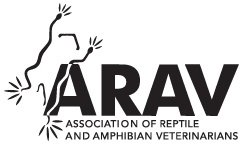Venomoid Surgery in Venomous Snakes: Surgical Technique and Follow Up
Venomoid surgery is currently performed in many countries and it is possible to find venomous snakes rendered inoffensive in “specialized markets.” However, it should be stressed that in some countries it is illegal to perform this kind of surgery and that venomoid surgery does not change the status of a venomous snake in the eyes of the law. Despite this, there are very few papers in the veterinary literature that describe the techniques, the indications, the possible complications, and the ethics of such a procedure. In this paper the authors describe state of the art for venomoid surgery and discuss in detail venom duct ligation and resection techniques in Elapidae and Viperidae. Intraoperative duct identification techniques, ethics of the procedure, and follow up are also discussed.Abstract

Crotalus atrox. Intra-operative photograph of the venom gland duct; it is visible once the skin has been reflected.

Intra-operative photograph of the venom gland duct in Naja pallida.

Bitis arietans. Intra-operative photograph of venom gland duct. The segment of the duct between the ligatures was removed.

Bitis arietans. Photograph of facial scar 26 months after surgery.

Crotalus atrox. Photograph of facial scar 36 months after surgery.

Naja pallida. Photograph of facial scar 35 months after surgery.

Echis coloratus. Photograph of facial scar 13 months after surgery.

Bitis arietans. Histopathology of the venom gland 26 months post-surgery.



